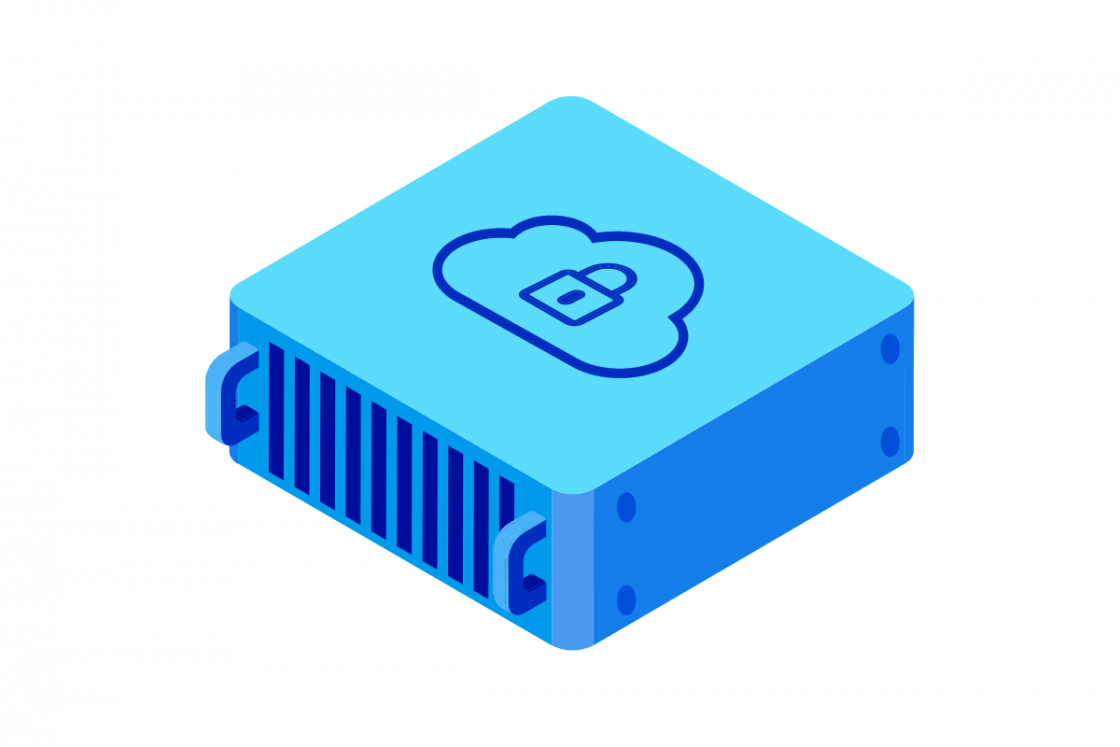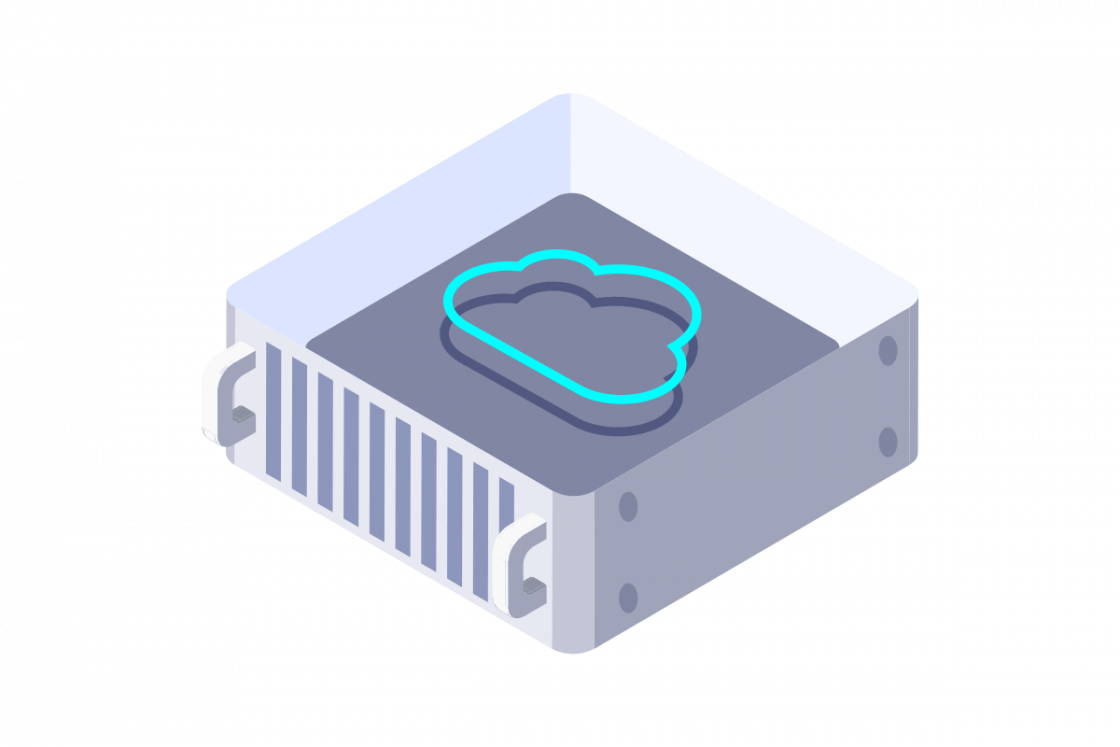What is cloud networking?
Cloud networking refers to managing and delivering network resources and services using cloud computing infrastructure and technologies. Instead of relying solely on traditional, on-premises hardware, cloud networking utilises virtualised network components, such as virtual routers, firewalls, and load balancers, that are hosted in a cloud environment – which can be a public cloud, a private cloud, or a combination of both.
It extends network connectivity and capabilities into the cloud, allowing organisations to connect users, applications, data centres, and edge locations through a flexible, internet-accessible infrastructure. It involves designing, building, and managing networks that operate within and between these cloud environments.

The core idea is to leverage the inherent benefits of the cloud – such as scalability, agility, and on-demand resource availability – and apply them to networking. This approach allows networks to be configured, scaled and managed more dynamically and often more efficiently than traditional networks tied to physical hardware limitations.
How does cloud networking work?
Cloud networking operates by shifting traditional networking functions away from physical hardware and into software-based, virtualised environments hosted within a cloud provider's infrastructure or a private cloud setup. It uses several key concepts and technologies to create flexible, scalable, and manageable networks.
At its heart, cloud networking utilises virtualisation to replicate the functions of physical network devices, such as routers, switches, firewalls, and load balancers, in software. These virtual resources can be provisioned, configured, and managed programmatically, often through web-based dashboards or APIs provided by the cloud vendor.
Here are some of the core components and technologies that make cloud networking function:
Virtualisation and Virtual Networks
The foundation of cloud networking is the abstraction of physical hardware. Network functions are run as software on servers within the cloud provider's data centres. This enables the creation of virtual networks, such as Virtual Private Clouds (VPCS), which are logically isolated sections within a public cloud. Within these VPCS, organisations can define their IP address ranges, create subnets for segmentation, configure route tables, and set up network gateways, thereby mimicking a traditional network while leveraging the flexibility of the cloud.
Software-Defined Networking (SDN)
Cloud networking heavily relies on Software-Defined Networking (SDN) principles. SDN separates the network's control plane, which makes decisions about where traffic is sent, from the data plane, which actually forwards the traffic. In a cloud context, network management and configuration are centralised and handled by software controllers.
Connectivity and Routing
Cloud networking establishes connections between various resources and services. This includes connecting virtual machines (VMS) within the same virtual private cloud (VPC), linking different VPCS together, connecting VPCS across multiple cloud providers (multi-cloud), or establishing secure links between the cloud environment and an organisation's on-premises data centres (hybrid cloud).
By combining these elements, cloud networking allows organisations to build and operate complex network infrastructures that are adaptable, scalable on demand, and managed through software such as a load balancer, aligning network capabilities with the dynamic nature of cloud computing resources.
How secure is cloud networking?
The security posture of a cloud network is not predetermined; it is a direct result of design choices, diligent configuration, and ongoing management practices. It operates under a crucial shared responsibility model, where the cloud service provider secures the fundamental infrastructure of the cloud. At the same time, the customer is responsible for securing everything they operate within the cloud, including how they configure and use networking services.
Cloud Provider Responsibilities:
Cloud service providers make substantial, ongoing investments in securing their vast global infrastructure. Their responsibilities generally cover the foundational elements:
- Physical security: Protecting the physical data centres that house servers, storage, and network gear from unauthorised access or environmental threats.
- Infrastructure security: Securing the core compute, storage, and networking hardware, along with the virtualisation layer (hypervisor) that enables cloud services.
- Network resilience: Implementing measures to protect their network backbone against large-scale threats, notably Distributed Denial of Service (DDoS) attacks, often providing customer baseline protection.
- Security services: Developing and offering a comprehensive suite of security tools, services, and features (like encryption, firewalls, and identity management) that customers can leverage to secure their applications and data.
Customer Responsibilities
Securing the cloud network effectively falls heavily on the customer. While the CSP provides the secure foundation and the tools, the customer must use them correctly. Key areas of customer responsibility include:
Configuration
This involves meticulously setting up virtual network components, such as Virtual Private Clouds (VPCS), subnets, route tables, and various gateways (including Internet, NAT, and VPN). Misconfigurations, such as accidentally leaving ports open to the internet or setting overly permissive routing rules, are a primary cause of cloud security incidents and must be actively avoided through careful planning and regular auditing.
Access control
Implementing robust identity and access management (IAM) policies is crucial. This means adhering to the principle of least privilege, ensuring that users and services have only the permissions strictly necessary for their tasks.
Firewall management
Properly configuring and maintaining virtual firewalls is essential for controlling traffic flow. This usually involves managing stateful firewalls to track connections and typically operates at the instance level.
Data encryption
Protecting data confidentiality requires encryption both in transit and at rest. Data moving across the network, especially over the public internet or between different environments, should be secured using protocols like TLS/SSL or secure VPN connections.
Segmentation
Effectively utilising network segmentation techniques, primarily through Virtual Private Clouds (VPCs) and subnets, is crucial for security. This isolates different application tiers or environments (e.g., development vs. production). Good segmentation limits the "blast radius" if one part of the network is compromised.
Monitoring and logging
Continuous monitoring and comprehensive logging are non-negotiable for detecting threats and investigating incidents. Customers should enable and analyse relevant logs. Setting up automated alerts for suspicious activities is critical for timely response.
Security Considerations
Cloud networking can significantly enhance security posture if used correctly. Companies that choose to use cloud networking just need to ensure a few key steps are taken:
- Access to advanced tools: Organisations gain access to sophisticated, scalable security services, including managed threat detection, WAFS, and DDoS mitigation, often maintained by dedicated security experts at the CSP.
- Centralized control & automation: SDN enables unified management and automated enforcement of security policies, reducing manual errors and improving consistency.
- Compliance and updates: Providers often maintain compliance with various industry standards, such as ISO 27001, SOC 2, and PCI DSS, which helps customers meet their obligations. They also handle patching of the underlying infrastructure.
However, the dynamic nature of the cloud, the potential for misconfiguration due to complexity, the need for specialised cloud security skills within the customer's team, and the inherent reliance on the provider's security practices remain key considerations.
In conclusion, a well-architected and diligently managed cloud network can achieve a very high level of security, often exceeding what's feasible on-premises for many organisations. Success hinges on understanding the shared responsibility model and rigorously applying security best practices to the customer-controlled aspects of the cloud environment.
Cloud networking vs. traditional networking
Cloud networking and traditional networking represent fundamentally different approaches to building and managing the connections that link users, applications, and data.
Traditional networking is rooted in physical infrastructure. Organisations purchase, deploy, and manage their hardware, such as routers, switches, firewalls, and load balancers, within their own data centres or premises.
In contrast, cloud networking abstracts this infrastructure into software-based services delivered by a cloud provider. Instead of physical devices, organisations utilise virtualised network functions – such as virtual routers, virtual private clouds (VPCS), software-defined firewalls, and load balancers – which are provisioned and managed through web interfaces or APIS.
This leverages the provider's massive infrastructure, enabling rapid deployment and on-demand scalability; network resources can be spun up or down in minutes to match application needs.
Cloud networking vs Cloud computing
While closely related and often used together, cloud networking and cloud computing are distinct concepts. Cloud computing is the broad, overarching concept of delivering various IT resources – including servers (compute), storage, databases, software, analytics, and more – on-demand over the internet, typically with pay-as-you-go pricing. It encompasses various service models, including Infrastructure as a Service (Iaas), Platform as a Service (Paas), and Software as a Service (Saas).
On the other hand, cloud networking is a specific subset or component of cloud computing, focusing exclusively on the networking aspects within this model. It provides the virtual network infrastructure, services, and connectivity required to link cloud resources together and connect them to users or on-premises environments.
OVHcloud and Cloud Networking
OVHcloud Public Cloud offers flexible and scalable solutions for building and deploying applications globally, featuring a wide range of services, secure private networking via vRack, and load balancing for high availability and performance:

Public Cloud
Unlock unparalleled flexibility and performance with OVHcloud Public Cloud. Build, deploy, and scale your applications effortlessly on our open, reversible, and transparent cloud solutions. Benefit from a comprehensive catalogue of services – including compute instances, scalable storage, robust networking, databases, and AI tools.

Public Cloud Network
Build secure and scalable network architectures within the OVHcloud Public Cloud. Isolate your resources and connect them privately across data centres worldwide using our vRack technology. Our cloud networking solutions offer the flexibility and control you need.

Public Cloud Load Balancer
Ensure optimal performance and high availability for your applications with the OVHcloud Public Cloud Load Balancer. Automatically distribute incoming traffic across multiple instances to prevent overloads and guarantee seamless user experiences, even during peak demand.